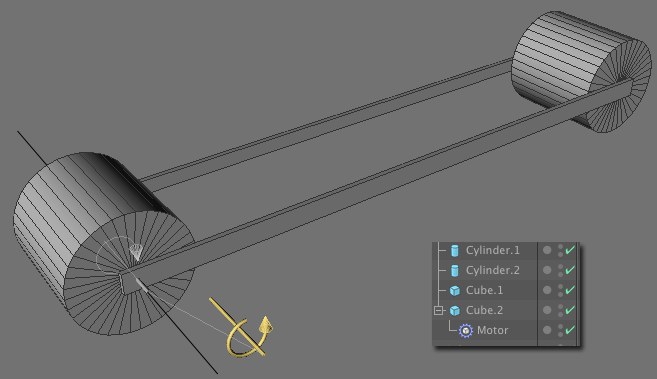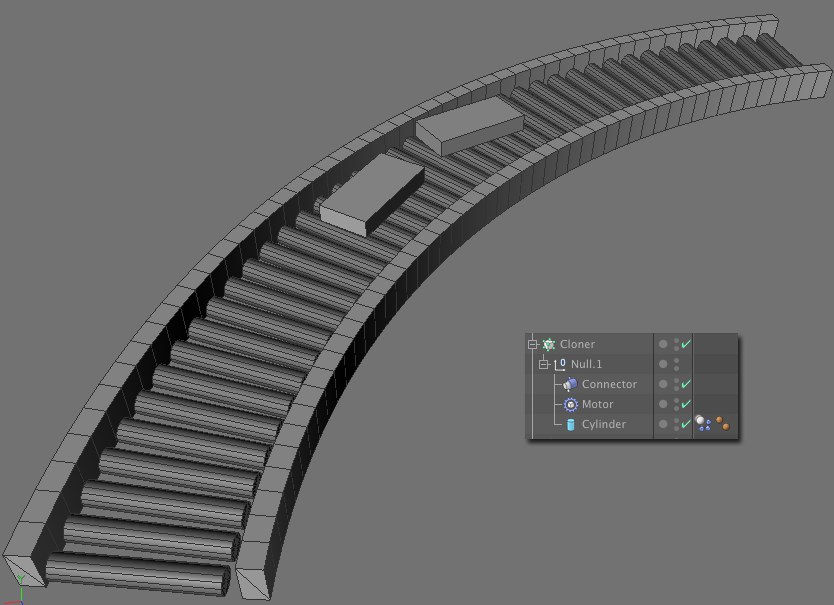![]() Motor
Motor
Motor
A Motor is a Dynamics element that exerts a continuous force or torque on an object to which a Dynamics Body tag has been assigned.
A Motor can be used to actuate a vehicle’s wheels or the cylinders of a conveyor, for example. In most cases, however, a moving object can be animated using normal keyframes.
In contrast to its orientation, the location of a Motor in relation to the object it actuates is irrelevant. The Motor’s orientation (angle) defines the direction in which the object will move or the torque axis. Both are displayed in the Viewport in the form of a motor.
If necessary, make the Motor a Child object of the object so it is oriented correctly (e.g., the chassis of a car - NOT it’s rotating wheels), as in the following example (see also Connector Position):
 The location of the Motor is irrelevant but its rotational axis should lie parallel to the rotational axis of the wheels. The required Connectors are not pictured.
The location of the Motor is irrelevant but its rotational axis should lie parallel to the rotational axis of the wheels. The required Connectors are not pictured.When applying torque, make sure the rotational axis of the rotating object is clearly linked to a Hinge Connector. Otherwise unusual oscillating rotational movements can result.
Functioning Motors can also be cloned, as in the example below:
 Each cylinder rotates.
Each cylinder rotates.In the example above a cylinder, which is attached via a Hinge Connector is driven by a motor. These elements were placed into a Null Object and duplicated using a Cloner object. The result is a functioning conveyor belt.